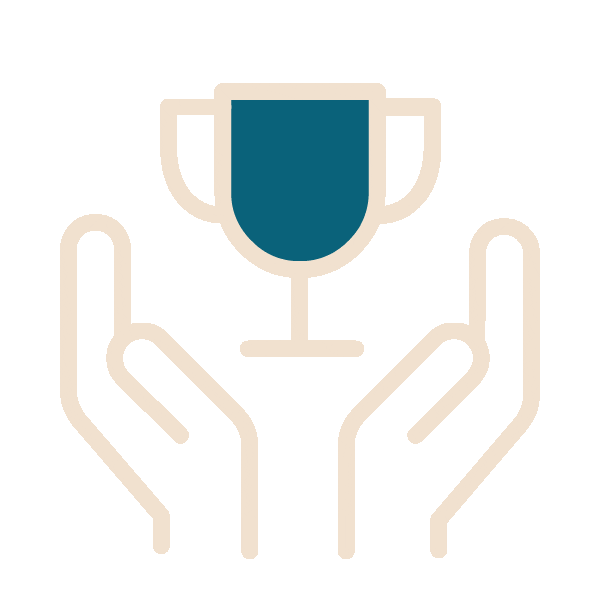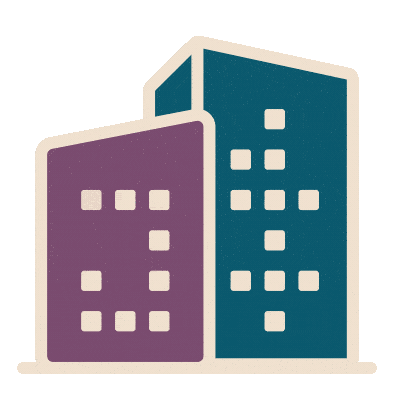#WeAreWELL: Ethan Bourdeau
Ethan Bourdeau leads the research and development of the Sound concept on the Standard Development team at IWBI, a passion that stems from both his musical talents – he can play a plethora of instruments – and personal wellness – he cycles competitively! At a time when everyone seems to be interested in the perception of sound – Yanny or Laurel, Ethan hears both – Ethan shared with us his acoustical journey, musical upbringing and what he’s most excited about for the Sound concept in WELL v2.
How did you get into the field of acoustics and acoustical consulting?
I got into acoustics when I was looking for music schools to attend after high school. I really wanted to continue my music education and keep being a performer and, at the same time, I was interested in architectural science and engineering. I found a really good program at the University of Hartford where I could do a a dual program in music performance and acoustical engineering, a joint program between the engineering school and music conservatory. It was there that I learned about acoustic consulting; the program is centered around being able to design spaces using acoustical theory. We had a couple projects that focused on implementing acoustical consultations and recommendations on actual projects, including a space on campus.
During the summer before my junior year, I was accepted into a program at Longman Lindsay, and right afterwards I was given the opportunity to intern at a theatre design company in the city where I got to work in performing arts consulting. After that, I came back to work at Longman Lindsay for two years.
And that’s when you were exposed to WELL?
Almost immediately.
What types of projects do you enjoy consulting on the most? Has WELL changed the way you see acoustics?
What’s interesting to me about how acoustics is addressed in WELL is how it combines health and wellness with comfort. Acoustics is often designed with a listener in mind – even the metrics are about how listeners perceive sound. I guess where the turning point began in my appreciation of consultation is when I was designing for performing arts venues, which was hyper-focused on the way an audience member will receive information or entertainment. To design a space with that in mind, you are considering an element of comfort or human perception and how they enjoy the space. I think it’s really easy to transfer that same mindset and methodology into a workplace environment in understanding the various elements that are conducive to human productivity or employee satisfaction. Understanding the way humans interact with spaces from a comfort perspective is ultimately ubiquitous with consultation in all project types, whether for wellness or performing arts.

So what was your favorite project that you worked on?
I did a lot of work in a performing arts venue in Baltimore called Baltimore Center Stage. As an intern, I was able to work on a lot of the elements of the project. The team I was working on only had one lead acoustical consultant and I had the opportunity to work under her on an in-the-round theatre, where the audience is around the stage. I spent a lot of time working on this project and it was finished within the past year. I haven’t been yet but I’m looking forward to going and checking it out. One of the best parts of consulting on performance arts venues is that you get to enjoy them at the end. It’s difficult to appreciate the end result within commercial spaces since these spaces are only accessible by tenants and, if you’re lucky, you might have a chance to see your recommendations implemented first hand.
You’ve performed on a number of different instruments: how did you pick up so many?
When I started learning to play music in elementary school, I was handed a baritone horn when I asked for a french horn and it just sort of stuck. One of my music professors in college said, “It’s not you who chooses the euphonium, it’s the euphonium who chooses you.” I guess it’s a similar scenario with the baritone horn: I was bestowed this particular instrument and I quickly became recognized as a musician; it was something I had a knack for. The more opportunities came onto my plate, the more challenging it was and the more excited I was to play. Come high school, it came naturally to me to want to attend and represent my school in national competitions and festivals. During this time, I was also picking up different instruments. For my thirteenth birthday my parents got me an electric guitar and it was game over – I was just so enthralled and I still am. There was one concert in high school where I played 13 different instruments or so. I’m sure from the audience it looked funny watching me scramble across the stage to get behind all these instruments. But to me, it was the love of being versatile. It came naturally to want to play more instruments.
Do you have a favorite instrument?
I do love guitar a lot. It’s a really freeing instrument and it’s really accessible. I don’t ever have to explain what a guitar is but I always have to explain what a euphonium is. A less common instrument that I really like to play is a conch horn, like a conch shell.

What does the intersection of sound and health look like to you?
Now that I’ve lived in New York City for a couple of years, it’s been interesting to practice acoustics, but also experience sound in urban environments and pinpoint moments where my own stress or health is being compromised by elevated background noise levels from traffic or sirens or impulses that are ubiquitous to the city environment. I try to stay cognizant of how sound affects me and my work output personally. I bring this to my enthusiasm in developing the Sound concept, just knowing first hand from living in the city how it affects you.
When I’m on my bike, listening is important. And when I’m riding in the city, there’s a lot more brain power involved in recognizing the elements around me that could potentially be dangerous or that I should keep an eye out for such as dogs, other cyclists, cars, etc. Does that impact my performance on the bike? I’m riding not only to be physically active, but also to alleviate stress, but I wonder if all this sound hinders my ability to achieve that goal. Whereas growing up in rural Vermont riding was peaceful – you may have to worry about a couple cars but that’s really it.
Working in an environment where there are loud doors, loud equipment, I’m also more cognizant of the inner workings of offices or classrooms and how the indoor acoustic comfort or acoustic quality affects my performance. It’s been really interesting learning more about how you can directly relate the noise level or the acoustic quality of a classroom to student cognition or memory retention.
I’m passionate about understanding the element of universal design in acoustic comfort and how it can meet the needs of students who are hard of hearing or students that have attention deficit or autism spectrum disorders. This is something that I’ve really cared about for a long time. I’m looking forward to working with acoustic experts who are also concerned about acoustical comfort being addressed from a universal design perspective so that all students can benefit. This is something that I hope to expand in the Sound concept as it continues to evolve.

Speaking of evolution, the WELL v2 pilot is launching at the end of the month. What changes to the Sound concept excite you the most?
One thing that I’m really excited about with the new version of WELL is the idea of making things more flexible. Being a previous practitioner and user of the standard, there were definitely certain elements that really benefited new design, new construction, new building. In working on some projects that were fit-outs of existing spaces, my team and I faced problems in terms of implementation and controlling background noise in a space that already exists. I’m excited about the new options that we have in terms of accessibility for existing buildings particularly with the idea of controlling internally generated noise. I’m looking forward to hearing what users have to say about how these new features can be implemented and whether they are indeed more accessible or if further tweaking is needed to better address the needs of existing spaces.
What does the future of sound and the Sound concept look like to you?
I think there’s a lot of room to account for the growing trend of fitness elements in spaces. With more introduction of fitness as a wellness concept in most projects comes the eventual concern of noise and outbreak of noise from fitness amenities. Controlling these elements happens more at the structural level in terms of impact noise. One thing I’m excited to focus on is human perception of impact noise and how we can design criteria that promote isolation of noise from weights, treadmills or footfall. That’s a new avenue we’re going to explore in tandem with the WELL Sound advisory. Another thing that I want to explore is promoting hearing health, which includes finding avenues to promote regularly scheduled audiometry tests or routine check-ups to make sure occupants are knowledgeable about hearing health and aware that the noise around them, such as headphone volume, can potentially negatively affect their hearing.
Can you leave us with some tips on how to protect our hearing health?
I know some phones have a feature that notify you when you’ve increased the volume to a point that may cause hearing damage. Never take these messages for granted. Additionally, if you’re going to concert venues or performances where amplification is present and likely loud, bringing earplugs is highly recommended. I think there might be some stigma that the earplugs will take away from the performance but there are some new options for earplugs that are equalizable such that they can be tuned to your ear or tuned to a space.
The next version of WELL launches at the end of May. Check out our landing page for words from IWBI Chief Product Officer Rachel Gutter, for further information about the next version of WELL and more.






